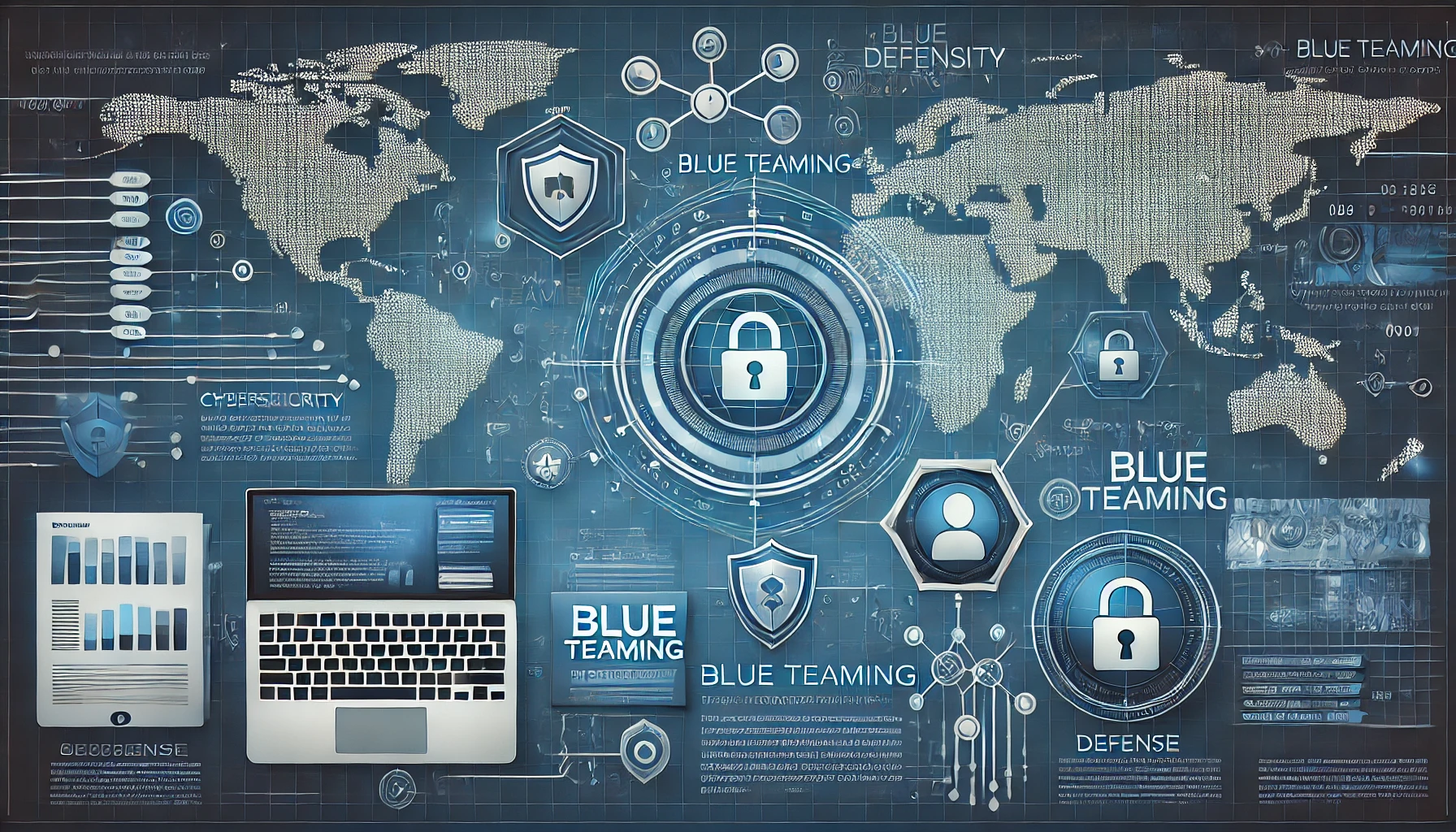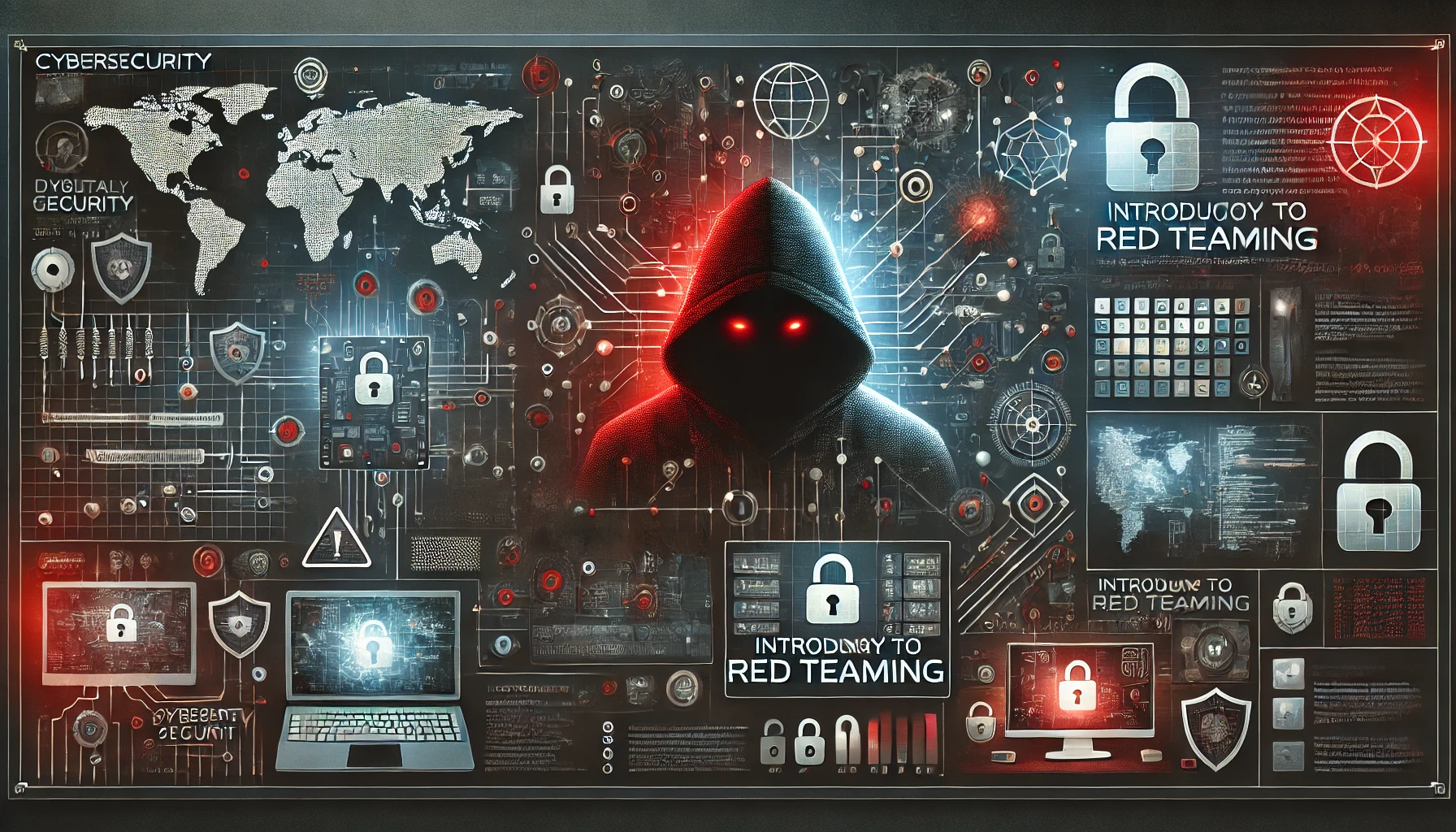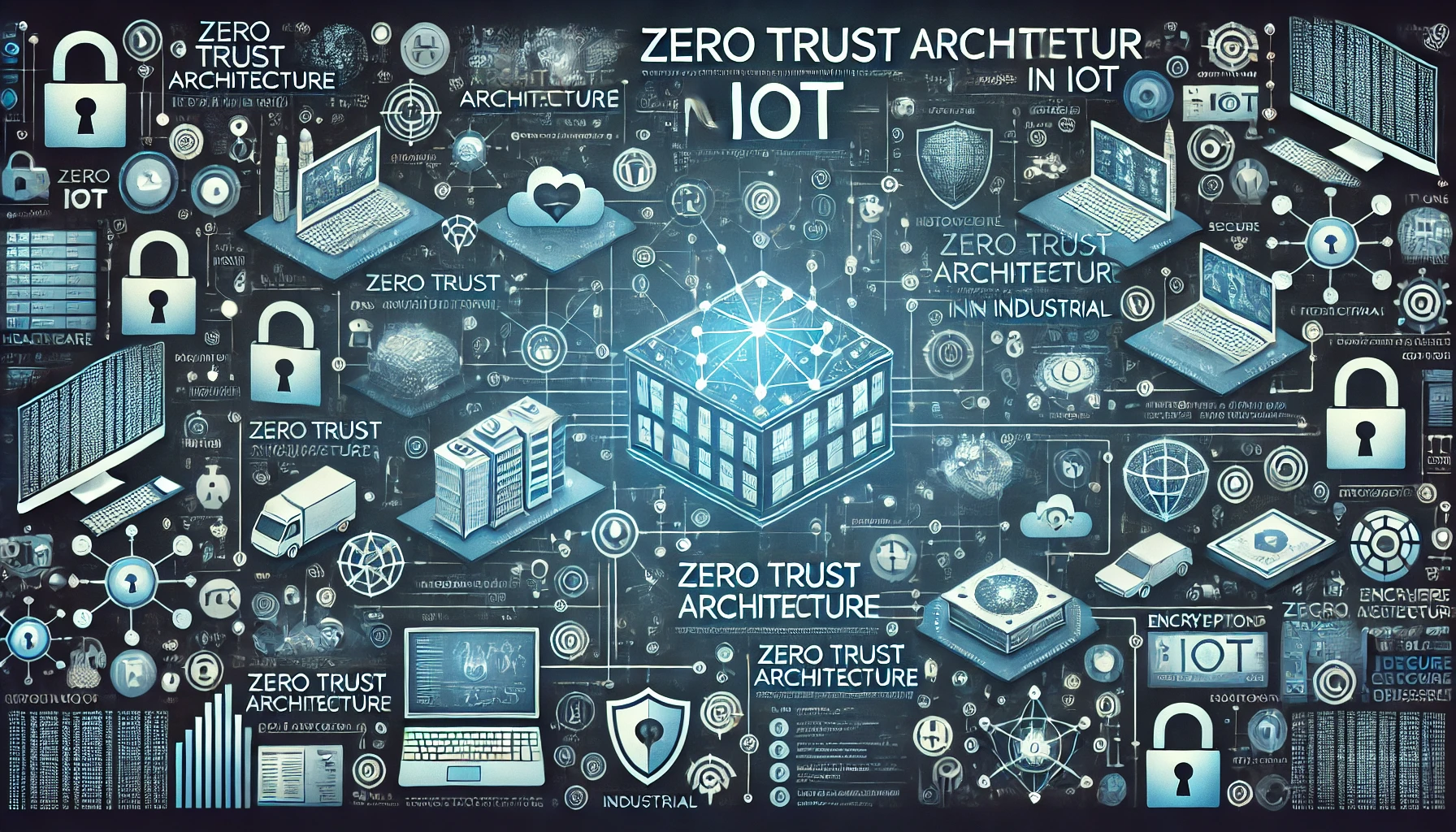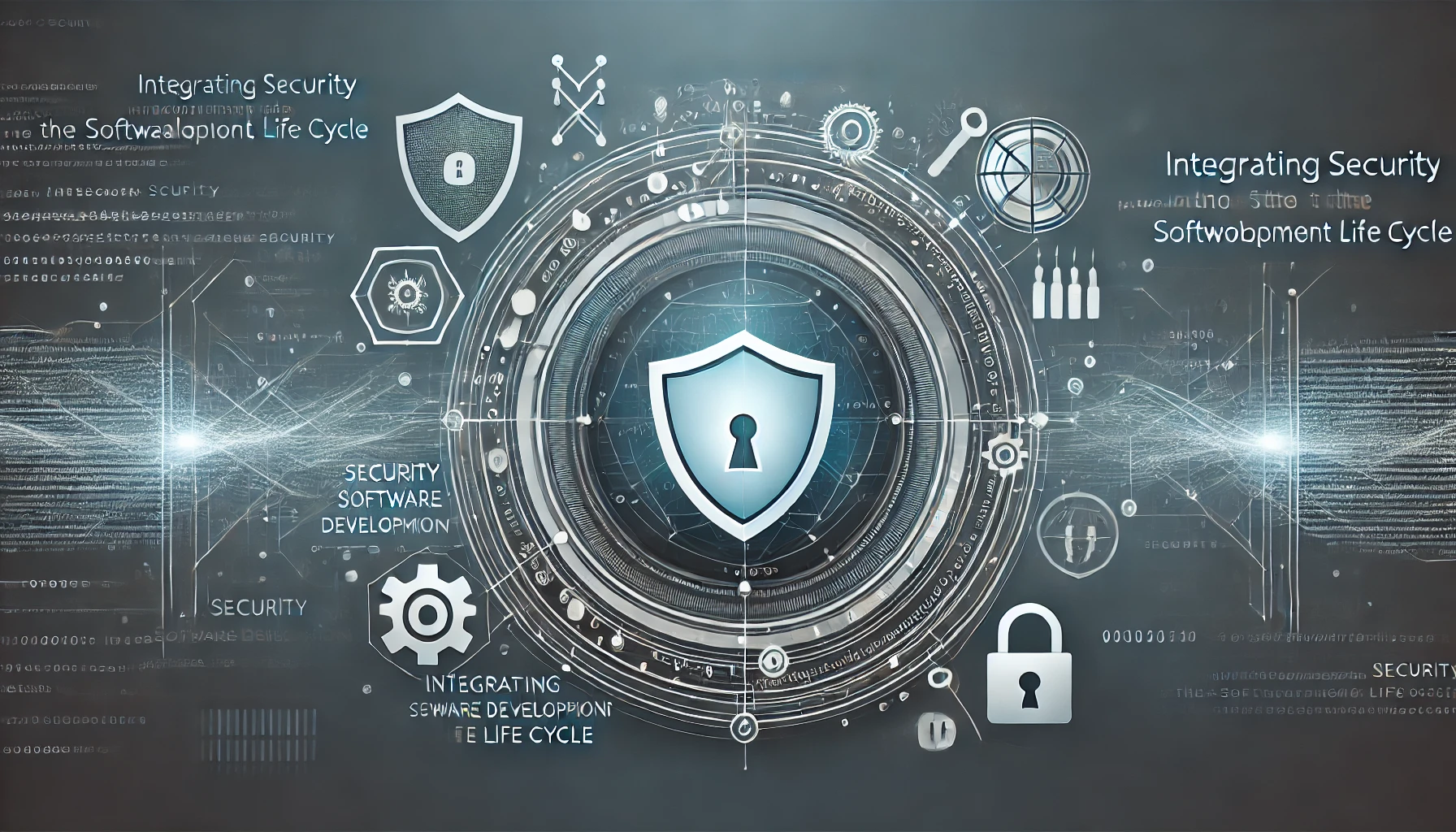
As a cybersecurity expert with extensive experience in defensive security operations, I’ve witnessed firsthand the critical role that Blue Teaming plays in safeguarding organizations against cyber threats. This comprehensive guide delves deep into the world of Blue Teaming, providing detailed insights into methodologies, frameworks, tools, and best practices. Whether you’re a seasoned professional or new to the field, this guide aims to enhance your understanding of defensive strategies and their vital importance in modern cybersecurity.
1. Introduction to Blue Teaming
1.1 Understanding Blue Teaming
Blue Teaming refers to the defensive security team responsible for protecting an organization’s information systems against cyber threats. The Blue Team’s primary mission is to detect, respond to, and mitigate security incidents while continuously improving the organization’s security posture.
Key Responsibilities:
- Monitoring: Continuous surveillance of networks and systems.
- Detection: Identifying potential security incidents.
- Response: Acting swiftly to contain and mitigate threats.
- Prevention: Implementing measures to prevent future incidents.
- Compliance: Ensuring adherence to legal and regulatory requirements.
1.2 The Evolution of Defensive Security
Defensive security has evolved significantly over the years due to the increasing complexity and sophistication of cyber threats.
Historical Milestones:
- Early Days: Focus on perimeter defenses like firewalls and antivirus software.
- Advanced Threats: Emergence of APTs necessitated more proactive defense strategies.
- Modern Era: Adoption of advanced technologies like AI and machine learning for threat detection.
1.3 Difference Between Blue Teaming, Red Teaming, and Purple Teaming
- Blue Teaming: Focused on defense, monitoring, and incident response.
- Red Teaming: Simulates real-world attacks to test the organization’s defenses.
- Purple Teaming: Collaborative effort between Red and Blue Teams to enhance security through shared insights.
2. The Philosophy and Objectives of Blue Teaming
2.1 Protecting Organizational Assets
The core philosophy of Blue Teaming revolves around safeguarding the organization’s critical assets, including:
- Data: Sensitive information, intellectual property.
- Infrastructure: Networks, servers, endpoints.
- Reputation: Maintaining trust with customers and partners.
2.2 Continuous Monitoring and Incident Response
Proactive defense requires:
- 24/7 Monitoring: Utilizing SOCs for real-time surveillance.
- Incident Response Plans: Prepared strategies for various threat scenarios.
- Threat Intelligence Integration: Staying informed about emerging threats.
2.3 Enhancing Security Posture and Compliance
Continuous improvement is achieved through:
- Regular Assessments: Vulnerability scans, penetration tests.
- Policy Development: Implementing robust security policies and procedures.
- Compliance Alignment: Ensuring adherence to standards like ISO 27001, NIST.
3. Blue Team Methodologies and Frameworks
3.1 Defense in Depth Strategy
A multi-layered approach to security that includes:
- Physical Security: Controlling physical access to facilities.
- Network Security: Firewalls, IDS/IPS systems.
- Endpoint Security: Antivirus, EDR solutions.
- Application Security: Secure coding practices, WAFs.
- Data Security: Encryption, DLP.
Benefits:
- Redundancy: Multiple layers compensate for potential failures.
- Comprehensive Coverage: Addresses various attack vectors.
3.2 NIST Cybersecurity Framework
A set of guidelines and best practices developed by the National Institute of Standards and Technology.
Core Functions:
- Identify: Understanding organizational context, assets, and risks.
- Protect: Implementing safeguards to ensure service delivery.
- Detect: Developing activities to identify cybersecurity events.
- Respond: Taking action regarding detected incidents.
- Recover: Restoring capabilities after a cybersecurity event.
Implementation Tiers:
- Tier 1: Partial
- Tier 2: Risk-Informed
- Tier 3: Repeatable
- Tier 4: Adaptive
3.3 MITRE ATT&CK for Defenders (ATT&CK®)
A comprehensive knowledge base of adversary tactics and techniques used to improve detection strategies.
Components:
- Tactics: The adversary’s tactical objectives.
- Techniques: How adversaries achieve those objectives.
- Sub-Techniques: Specific implementations.
Usage:
- Threat Modeling: Understanding potential attack paths.
- Detection Mapping: Aligning detection capabilities with known techniques.
- Gap Analysis: Identifying areas lacking coverage.
4. Legal and Ethical Considerations
4.1 Compliance with Regulations
Blue Teams must ensure that security practices comply with relevant laws and regulations, such as:
- General Data Protection Regulation (GDPR): Protecting personal data in the EU.
- Health Insurance Portability and Accountability Act (HIPAA): Securing healthcare information.
- Payment Card Industry Data Security Standard (PCI DSS): Protecting cardholder data.
4.2 Ethical Guidelines and Professional Conduct
Adhering to ethical standards is crucial:
- Confidentiality: Safeguarding sensitive information.
- Integrity: Ensuring accuracy and trustworthiness.
- Accountability: Taking responsibility for actions and decisions.
4.3 Privacy and Data Protection
Balancing security measures with privacy considerations:
- Data Minimization: Collecting only necessary data.
- Access Controls: Restricting data access to authorized personnel.
- Encryption: Protecting data in transit and at rest.
5. Building a Blue Team
5.1 Defining Roles and Responsibilities
Key roles within a Blue Team may include:
- Security Analysts: Monitor and analyze security events.
- Incident Responders: Manage and respond to security incidents.
- Threat Hunters: Proactively search for threats within the network.
- Security Engineers: Design and implement security solutions.
- Compliance Officers: Ensure adherence to regulations and policies.
5.2 Skill Sets and Training
Essential skills for Blue Team members:
- Technical Expertise: Networking, operating systems, security technologies.
- Analytical Thinking: Ability to analyze complex data and identify patterns.
- Communication Skills: Effectively conveying information to various stakeholders.
- Continuous Learning: Staying updated with the latest threats and technologies.
5.3 Team Structure and Collaboration
Organizing the team for efficiency:
- Hierarchical Structure: Clear reporting lines and responsibilities.
- Collaboration Tools: Utilizing platforms like Slack, Microsoft Teams.
- Cross-Functional Teams: Integrating with other departments like IT, Legal.
6. Security Operations Center (SOC) Operations
6.1 Designing a SOC
Key considerations:
- Location: Centralized vs. distributed models.
- Infrastructure: Hardware, software, network requirements.
- Security Controls: Physical and logical access controls.
6.2 SOC Tiers and Staffing
Typical SOC structure:
- Tier 1: Security Analysts handling initial alerts.
- Tier 2: Incident Responders conducting in-depth analysis.
- Tier 3: Threat Hunters and Specialists focusing on advanced threats.
6.3 SOC Processes and Workflows
Standard operating procedures include:
- Event Triage: Prioritizing alerts based on severity.
- Incident Escalation: Defined paths for escalating issues.
- Knowledge Management: Documentation and information sharing.
7. Threat Intelligence and Hunting
7.1 Understanding Threat Intelligence
Threat intelligence involves collecting and analyzing information about potential threats.
Types:
- Strategic Intelligence: High-level trends and threat actors.
- Tactical Intelligence: TTPs used by adversaries.
- Operational Intelligence: Specific details about attacks.
7.2 Implementing Threat Hunting Programs
Proactive approach to detecting threats:
- Hypothesis-Driven Hunting: Based on known behaviors.
- Data-Driven Hunting: Analyzing anomalies in data.
- Machine Learning: Leveraging AI for pattern recognition.
7.3 Tools and Techniques for Threat Hunting
Key tools:
- SIEM Platforms: For aggregating and analyzing logs.
- Endpoint Detection and Response (EDR): Monitoring endpoint activities.
- Network Traffic Analysis (NTA): Examining network communications.
8. Security Monitoring and Detection
8.1 Implementing SIEM Solutions
SIEM platforms aggregate and analyze security data.
Key Features:
- Log Management: Centralized storage of logs.
- Event Correlation: Identifying relationships between events.
- Real-Time Alerts: Immediate notification of potential incidents.
Popular SIEM Tools:
- Splunk Enterprise Security
- IBM QRadar
- LogRhythm NextGen SIEM
8.2 Log Management and Analysis
Best practices:
- Comprehensive Logging: Collecting logs from all critical systems.
- Retention Policies: Complying with regulatory requirements.
- Log Analysis Tools: Utilizing tools like ELK Stack (Elasticsearch, Logstash, Kibana).
8.3 Anomaly Detection and User Behavior Analytics
Detecting deviations from normal patterns:
- Anomaly Detection Algorithms: Statistical methods, machine learning.
- User and Entity Behavior Analytics (UEBA): Monitoring user activities for unusual behavior.
- Tools:
- Exabeam Advanced Analytics
- Securonix UEBA
9. Incident Response and Management
9.1 Incident Response Planning
Creating a structured approach:
- Incident Response Plan (IRP): Documented procedures for handling incidents.
- Roles and Responsibilities: Clear assignments during an incident.
- Communication Plans: Internal and external communication strategies.
9.2 Incident Handling Procedures
Stages of incident response:
- Preparation: Establishing policies and training.
- Identification: Detecting and determining the scope.
- Containment: Limiting the spread of the incident.
- Eradication: Removing the threat.
- Recovery: Restoring systems to normal operations.
- Lessons Learned: Analyzing the incident for improvements.
9.3 Post-Incident Activities and Lessons Learned
- Documentation: Detailed incident reports.
- Review Meetings: Gathering stakeholders to discuss the incident.
- Process Improvement: Updating policies and procedures.
10. Defensive Technologies and Tools
10.1 Endpoint Security Solutions
Protecting individual devices:
- Antivirus and Antimalware: Traditional protection against known threats.
- Endpoint Detection and Response (EDR): Advanced monitoring and response capabilities.
- Next-Generation Antivirus (NGAV): Using AI for threat detection.
Popular EDR Tools:
- CrowdStrike Falcon
- Microsoft Defender for Endpoint
- Carbon Black Endpoint
10.2 Network Security Devices
Securing network communications:
- Firewalls: Controlling incoming and outgoing traffic.
- Intrusion Detection Systems (IDS): Monitoring for malicious activities.
- Intrusion Prevention Systems (IPS): Blocking detected threats.
10.3 Cloud Security Tools
Protecting cloud environments:
- Cloud Access Security Brokers (CASBs): Enforcing security policies.
- Cloud Security Posture Management (CSPM): Identifying misconfigurations.
- Cloud Workload Protection Platforms (CWPP): Securing workloads across environments.
11. Vulnerability Management and Patching
11.1 Vulnerability Assessment Processes
Identifying and prioritizing vulnerabilities:
- Regular Scanning: Using tools like Nessus, Qualys.
- Risk Ranking: Assessing the impact and likelihood.
- Reporting: Providing actionable insights to stakeholders.
11.2 Patch Management Strategies
Ensuring systems are up-to-date:
- Patch Policies: Defining timelines and procedures.
- Testing: Verifying patches in a controlled environment.
- Deployment: Rolling out patches systematically.
11.3 Configuration Management
Maintaining secure configurations:
- Baseline Configurations: Standard settings for systems.
- Change Management Processes: Controlling modifications.
- Compliance Monitoring: Ensuring adherence to policies.
12. Access Control and Identity Management
12.1 Implementing IAM Solutions
Managing user identities and access:
- Single Sign-On (SSO): Simplifying authentication.
- Identity Governance: Managing user lifecycle.
- Access Reviews: Regularly auditing permissions.
Popular IAM Tools:
- Okta Identity Cloud
- Microsoft Azure Active Directory
- Ping Identity Platform
12.2 Multi-Factor Authentication
Enhancing authentication security:
- Something You Know: Passwords, PINs.
- Something You Have: Tokens, smart cards.
- Something You Are: Biometrics.
12.3 Privileged Access Management
Securing high-level accounts:
- Least Privilege Principle: Granting minimal necessary access.
- Session Monitoring: Recording privileged sessions.
- Credential Vaulting: Secure storage of credentials.
13. Data Protection and Encryption
13.1 Data Classification and Handling
Organizing data based on sensitivity:
- Classification Levels: Public, internal, confidential, secret.
- Handling Procedures: Guidelines for each classification.
- Labeling: Clear identification of data sensitivity.
13.2 Encryption Techniques and Key Management
Protecting data through encryption:
- Symmetric Encryption: Same key for encryption and decryption.
- Asymmetric Encryption: Public and private key pairs.
- Key Management: Secure generation, distribution, and storage of keys.
13.3 Data Loss Prevention (DLP) Solutions
Preventing unauthorized data exfiltration:
- Network DLP: Monitoring network traffic.
- Endpoint DLP: Controlling data on devices.
- Cloud DLP: Protecting data in cloud services.
14. Security Awareness and Training
14.1 Developing Security Training Programs
Educating employees on security best practices:
- Onboarding Training: Introducing security policies.
- Regular Updates: Keeping staff informed about new threats.
- Role-Based Training: Tailoring content to specific roles.
14.2 Phishing Simulations and User Education
Testing and improving user vigilance:
- Simulated Phishing Emails: Assessing susceptibility.
- Feedback and Coaching: Providing guidance on recognizing threats.
- Awareness Campaigns: Promoting security culture.
14.3 Cultivating a Security Culture
Embedding security into the organizational mindset:
- Leadership Support: Top-down emphasis on security.
- Recognition Programs: Rewarding good security practices.
- Open Communication: Encouraging reporting of suspicious activities.
15. Compliance and Regulatory Standards
15.1 Understanding Key Regulations
- GDPR: Protecting personal data in the European Union.
- HIPAA: Securing healthcare information in the United States.
- PCI DSS: Standards for handling payment card information.
- SOX: Financial reporting and auditing requirements.
15.2 Auditing and Reporting
Ensuring compliance through:
- Regular Audits: Internal and external assessments.
- Compliance Reporting: Documenting adherence to regulations.
- Remediation Plans: Addressing identified deficiencies.
15.3 Aligning Security Practices with Compliance
Integrating compliance into security operations:
- Policy Development: Reflecting regulatory requirements.
- Training: Educating staff on compliance obligations.
- Monitoring: Continuous oversight of compliance status.
16. Case Studies of Blue Team Successes
16.1 Case Study 1: Preventing a Ransomware Attack
Scenario:
- Threat: A sophisticated ransomware targeting the organization’s network.
- Actions Taken:
- Early detection through anomaly in network traffic.
- Immediate isolation of affected systems.
- Restoration from backups.
- Outcome:
- No data loss or downtime.
- Improved incident response procedures.
16.2 Case Study 2: Detecting and Mitigating Insider Threats
Scenario:
- Threat: An employee attempting to exfiltrate sensitive data.
- Actions Taken:
- Monitoring flagged unusual access patterns.
- Engaging HR and legal departments.
- Securely terminating the employee’s access.
- Outcome:
- Prevented data breach.
- Strengthened insider threat program.
16.3 Case Study 3: Securing Cloud Environments
Scenario:
- Threat: Misconfigured cloud storage exposing data.
- Actions Taken:
- Regular cloud security assessments.
- Implementing CSPM tools.
- Training staff on cloud security best practices.
- Outcome:
- No unauthorized access occurred.
- Enhanced cloud security posture.
17. Certifications and Professional Development
17.1 Notable Blue Team Certifications
- Certified Information Systems Security Professional (CISSP)
- GIAC Certified Incident Handler (GCIH)
- CompTIA Cybersecurity Analyst (CySA+)
- Certified Information Security Manager (CISM)
- Certified Information Systems Auditor (CISA)
17.2 Training Resources and Programs
- SANS Institute Courses
- ISC² Training Programs
- CompTIA Certifications
- ISACA Training and Conferences
17.3 Building a Career in Defensive Security
Steps to advance:
- Gain Foundational Knowledge: Networking, systems administration.
- Specialize: Focus on areas like incident response, threat hunting.
- Stay Updated: Continuous learning through webinars, workshops.
- Networking: Join professional organizations, attend conferences.
18. Future Trends in Blue Teaming
18.1 Artificial Intelligence in Defense
- AI-Powered Tools: Enhancing detection and response capabilities.
- Predictive Analytics: Anticipating threats before they materialize.
- Challenges: Managing false positives, ensuring ethical use.
18.2 Zero Trust Architecture
- Principle: “Never trust, always verify.”
- Implementation: Strict access controls, continuous authentication.
- Benefits: Reduces attack surface, limits lateral movement.
18.3 Automation and Orchestration in SOCs
- Security Orchestration, Automation, and Response (SOAR): Streamlining processes.
- Benefits:
- Faster incident response.
- Reduced manual workload.
- Improved accuracy.
19. Conclusion
Blue Teaming is a critical component of an organization’s cybersecurity strategy. By focusing on proactive defense, continuous monitoring, and swift incident response, Blue Teams play a vital role in protecting assets and maintaining trust. This exhaustive guide provides a comprehensive roadmap for understanding and implementing effective defensive security operations. As the cyber threat landscape continues to evolve, Blue Teams must remain agile, continuously improving their skills, tools, and methodologies to stay ahead of adversaries.
20. Frequently Asked Questions (FAQs)
Q1: What is the primary role of a Blue Team?
A1: The primary role of a Blue Team is to protect an organization’s assets by monitoring networks and systems for security breaches, responding to incidents, and implementing measures to prevent future attacks.
Q2: How does Blue Teaming differ from Red Teaming?
A2: Blue Teaming focuses on defensive security measures, while Red Teaming involves simulating attacks to test the organization’s defenses. Blue Teams work to detect and mitigate threats, whereas Red Teams emulate adversaries to identify vulnerabilities.
Q3: What are some essential skills for Blue Team members?
A3: Essential skills include technical expertise in networking and systems, analytical thinking, knowledge of security tools and technologies, effective communication, and a commitment to continuous learning.
Q4: How can organizations improve their Blue Team capabilities?
A4: Organizations can enhance their Blue Team capabilities by investing in training, adopting advanced security technologies, developing comprehensive incident response plans, and fostering a culture of security awareness.
Q5: What is the significance of a Security Operations Center (SOC)?
A5: A SOC serves as the central hub for monitoring, detecting, and responding to security incidents. It enables organizations to maintain continuous surveillance over their IT environment and coordinate defensive efforts effectively.
21. References and Further Reading
- NIST Cybersecurity Framework: https://www.nist.gov/cyberframework
- MITRE ATT&CK Framework: https://attack.mitre.org/
- SANS Institute: https://www.sans.org/
- “Blue Team Handbook: Incident Response Edition” by Don Murdoch
- Center for Internet Security (CIS) Controls: https://www.cisecurity.org/controls/
- ISACA Resources: https://www.isaca.org/
- CompTIA Cybersecurity Certifications: https://www.comptia.org/certifications/security
- Cybersecurity and Infrastructure Security Agency (CISA): https://www.cisa.gov/
Stay Connected with Secure Debug
Enhance your organization’s defensive capabilities with expert guidance from Secure Debug Limited. Our team specializes in building robust Blue Team operations, implementing advanced security solutions, and providing comprehensive training.
Need expert advice or support from Secure Debug’s cybersecurity consulting and services? We’re here to help. For inquiries, assistance, or to learn more about our offerings, please visit our Contact Us page. Your security is our priority.
Join our professional network on LinkedIn to stay updated with the latest news, insights, and updates from Secure Debug. Follow us here






